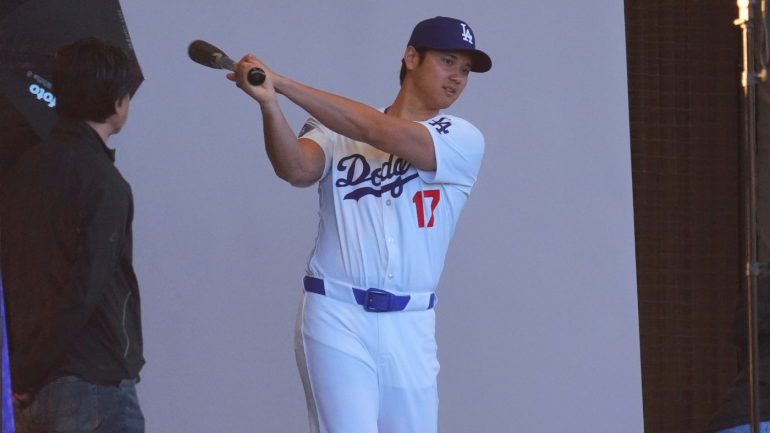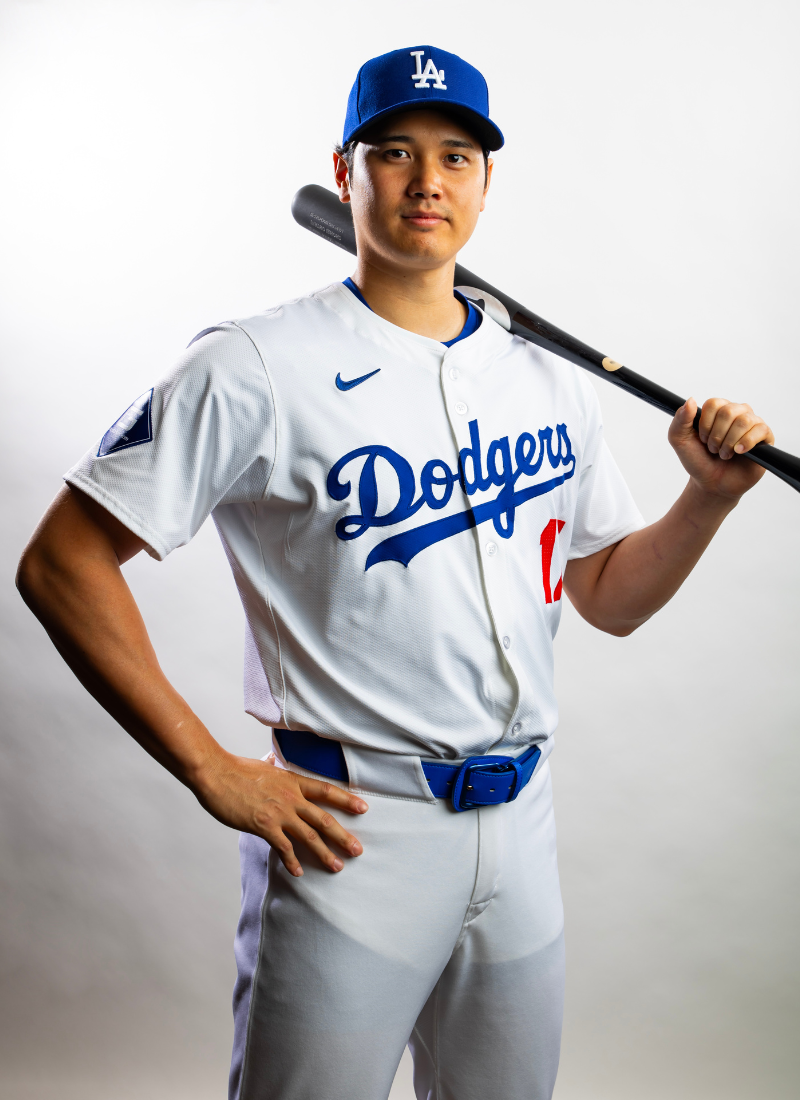
MLB spring training has arrived and with it comes fresh hope of a new year, a clean slate and uncomfortably translucent pants. The launch of the 2024 MLB season was accompanied by a rollout of new uniforms, designed by Nike and manufactured by Fanatics, that boast 25% more stretch, a "breathable, lightweight, high-performance fabric" and moisture-wicking Dri-Fit ADV technology that promises to keep athletes dry until the final pitch, according to the league. In theory, it all makes sense: summer is brutally hot, and we're not even the ones trying to go first to third on a ground ball up the middle.
But as beat writers rushed to tweet out their zoomed-in cell phone photos of the first signs of baseball, the uniforms revealed another feature: pants so transparent that you could see the jersey tag tucked into the waistband.
Scott Barlow welcome to Cleveland pic.twitter.com/fmGVQBJESR
— Andre Knott (@DreKnott) February 22, 2024
Photo day results continued the unfortunate trend, with clearly visible logos from compression shorts shining through as players forced smiles at cameras. The photos, some more graphic than others, became fuel for jokes on social media. But experts told CBS Sports that this isn't all a game.
"You want them focusing on that 96 mph fastball," not whether fans can read their brand of underwear, Sean Cormier, an associate professor and chair of the textile development and marketing department at the New York-based Fashion Institute of Technology, told CBS Sports.
Tasha Lewis, an associate clinical professor in fashion and retail studies at The Ohio State University, speculated that the same fabric was used for the jerseys and the pants, a big no-no in retail.
"You need a heavier, weighted fabric for pants," she told CBS Sports. "Bottom-weight fabric is heavier and it gives you more coverage. Heavier yarn, more closely knitted fabric."
With white fabric, Lewis said, it's usually obvious: stick your hand inside, and if you can see it, the fabric isn't thick enough to cover you. It's the same test we all run in dressing rooms. Fanatics, which manufactured the uniforms, declined to comment when reached by CBS Sports, but the process went wrong at some point along the chain, Lewis theorized, whether that was in what material was selected or what material was used in the final product.
"Whenever you have a uniform redo or changeover, it kind of throws off the balance of everything," Lewis told CBS Sports. "In general, when we're dealing with the cost of garments, the most expensive part is usually the fabric. Where you can sometimes save money is getting a lower-priced fabric that takes down the cost of the garment."
The new uniforms are made of at least 90% recycled polyester yarns, but Lewis, an expert in sustainable fashion, insisted that the reused materials shouldn't be the problem.
"We have pretty good technology for recycling polyester," she said. "The yarn is not the issue, it's the thickness that's the issue."

In the simplest terms, the issue is about how the yarns were used. The thicker the yarn and the tighter the knit, the sturdier the fabric. Picture a braid: the tighter you cross the strands, the less you can see through the weave.
Typically, Cormier explained, the manufacturer produces a sample, which is then put through a fit test. For an MLB uniform, that would likely include making sure the collar and sleeves fell right, the buttons hit on the chest in the right spot, the belt loops are in the right location and more.
"You stretch and bend and make sure the product feels comfortable. Everybody wants to feel comfortable. You don't want to be wet in the rain and you don't want to be cold in the winter. We all want to be comfortable," Cormier told CBS Sports. "So by doing the fit sessions, you make the product fit better. That's just the normal process. And nobody saw this during the fit sessions? I can't believe that."
Cormier, who also spent 18 years as a product development and quality assurance specialist for Liz Claiborne, also noted that MLB would likely have been brought in at some point to see the new wares.
"Didn't somebody during that fashion show go, 'boy, that's pretty see-through?'" Cormier said. "Pretty much all the home uniforms have white pants. I watch baseball enough to know that."
In 2013, Lululemon, the athletic apparel retailer, was forced to recall its black yoga pants because they were too sheer during more active yoga moves. This, Cormier said, is even worse: the players didn't even need to bend over or stretch to give way to a little too much information.
A spokesperson for MLB told CBS Sports that the league is in "close contact" with teams and partners to "ensure clubs have what they need for Opening Day."
"Like every Spring Training, Fanatics team services, Nike and MLB representatives are visiting camps to meet with all players, conduct uniform fitting sessions with them, and get their feedback on how their uniforms fits," the MLB spokesperson said in a statement. "Based on player requests, adjustments are being made to jersey size, waist, in-seam, length, thigh fit and the bottom of their pants. The goal of these meetings is to provide players with the most comfortable uniforms available for Opening Day."
The partnership between the league and the apparel companies, renewed on a 10-year deal in 2020, dictated that Nike would design the uniforms while Fanatics would manufacture them. The new uniforms, CBS Sports has learned, were put through years of testing, including player feedback. MLB has touted that same feedback, quoting All-Stars Nolan Arenado, Adley Rutschman and Ronald Acuña Jr. in press releases. But the see-through writing is on the wall.
"Imagine a guy sliding into second and ripping this thin pair of pants," Cormier, who has not tested the uniforms himself, told CBS Sports. "Even though it's polyester, which is a strong fiber, there's a chance that this is very lightweight and might have a problem with bursting. The lighter the product, the less durable or strong it's going to be."
It's not just the pants, either. The new jerseys, which promised to be softer and breezier, have drawn criticism from players and fans alike over the cheap-looking material and off-color logos. The MLBPA is already on high alert.
"We always put the athlete at the center of everything we do. We worked closely with MLB players, teams and the league to create the most advanced uniforms in the history of MLB which are lighter and more flexible," a spokesperson for Nike told CBS Sports in a statement.
"The quality and the performance of our product is of the utmost importance to us. We will continue to work with MLB, the players and our manufacturing partner to address player uniforms."
With Opening Day less than five weeks away, the league is on the clock, but Lewis said a fix would be nearly impossible; adding another layer of fabric inside the pants, akin to a slip under a woman's dress, would not just be difficult but also uncomfortable for the players, defeating the entire purpose of the new flexible, breathable material. Cormier, only somewhat joking, suggested dying the pants dark and making them the away uniform.
But it's not just about whether or not Arenado's uniform soaks up enough sweat. Both Lewis and Cormier stressed that how the players feel matters too; all fashion, in fact, is supposed to be about making you feel good.
"You can have all the anti-odor in the world," Cormier said, "but if you can see my package, it doesn't matter."


















